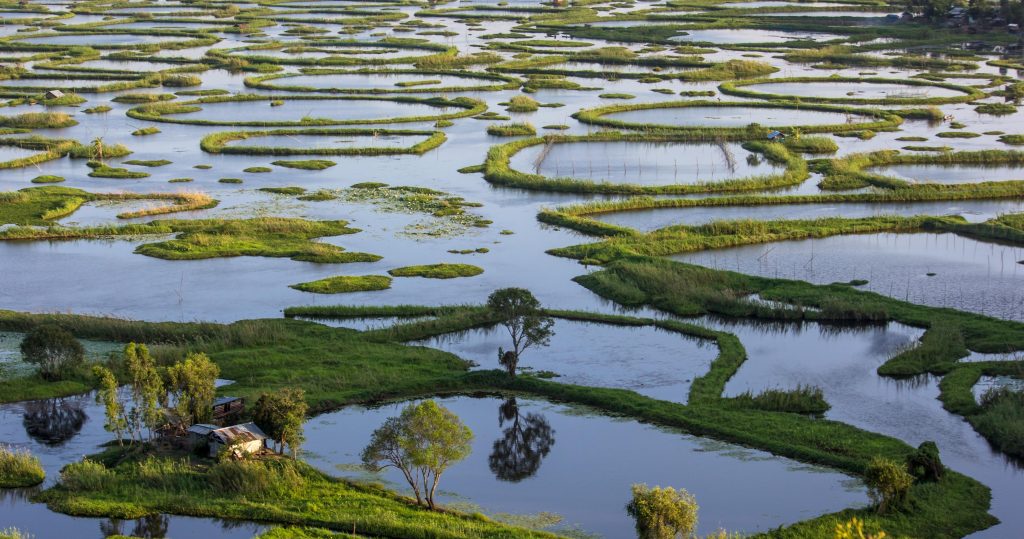News Highlights
Protest against the government decision to shift heritage park site in Manipur The State govt. had announced that a heritage park would come up near the Keibul Lamjao National Park (KLNP) in Bishnupur district Manipur
Focus Points
- The villagers took out a demonstration near the KLNP, 53 kilometers from Imphal in the Bishnupur district, in opposition to the plan to relocate the site.
- They claim that the residents of the proposed site are unrelated to the KNLP’s efforts to protect the endangered brow-antlered deer (Sangai).
Keibul Lamjao National Park
- The Keibul Lamjao National Park is a national park in the Bishnupur district of the state of Manipur in India.
- It is the only floating park in the world, located in North East India, and an integral part of Loktak Lake.
- The national park is characterized by many floating decomposed plant materials locally called phumdis.

Do you know?
- Phumdi is the most important and unique part of Sangai’s habitat.
- It is the floating mass of entangled vegetation formed by the accumulation of organic debris and biomass with soil.
- Its thickness varies from few centimeters to two meters. It floats with 4/5 part under water.
- Conservation Status
- 1966: The park initially declared as a Sanctuary
- 1977: Established as a National Park
- Fauna:
- The brow-antlered deer is found in Keibul Lamjao National Park
- Rare wild cats like the marbled cat and the Asian golden cat occasionally seen in the national park.
- Other animals like the Himalayan black bear and the Malayan bear also seen.
Brow-antlered deer (Sangai)
- Sangai is a medium-sized deer, with uniquely distinctive antlers, with extremely long brow tine, which form the main beam.
- The forward protruding beam appears to come out from the eyebrow.
- This signifies its name, brow-antlered deer.
- The Sangai is also called the Dancing Deer.
- Habitat:
- Floating marshy grasslands, Phumids, of the Keibul Lamjao National Park, located in the southern parts of the Loktak Lake (largest freshwater lake in eastern India)
- Endemic species found only in Manipur, India.
- Conservation Status:
- IUCN Status: Endangered
- Schedule – I animal in wildlife (Protection) act, 1972
- Conservation Issues
- Sangai was believed to be almost extinct by 1950
- But six individuals were spotted in 1953 and the State of Manipur has protected the species to increase the population to 204.
- Sangai faces threat from steadily degenerating habitat of phumdi as a result of continuous inundation and flooding caused due to artificial reservoir
- Water quality of the reservoir is degrading due to pollution and stoppage of nutrient supply.
- Sangai also faces threats of diseases from the livestock, inbreeding depression and poaching.
- WWF-India’s Initiatives
- WWF-India sent a high level delegation to Keibul Lamjao NP to study ground situation regarding current conservation scenario of Sangai
- WWF-India made certain recommendations to the Govt. of Manipur for conservation of the Sangai – including shifting some animals to a second home.
- WWF-India has also offered support for specific actions points/recommendations.
- WWF-India sent a high level delegation to Keibul Lamjao NP to study ground situation regarding current conservation scenario of Sangai
- Sangai festival— annual cultural festival organised by Manipur Tourism Department
Pic Courtesy: The Hindu
Content Source: The Hindu



